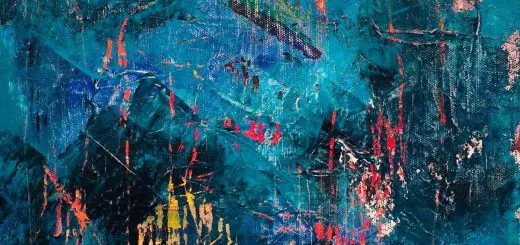The Ship of the Dead: Naglfar in Norse Myth

Looking for more amazing products? Check out our online store and explore our collection here! Happy shopping!
Before diving in, please note: This post is for informational purposes only. If you’d like to know more about how we approach topics, feel free to check out our friendly Disclaimer Page.
Hey there, amazing readers! 
We’re committed to delivering quality posts, and your support (even just sticking around despite the ads) means everything to us. So, bear with us, and thanks for helping us keep the good vibes rolling. Now, on to the fun stuff!
TRANSLATE BUTTON AT THE END OF THE ARTICLE
Overview
In Norse mythology, the concept of the afterlife was deeply ingrained in the culture and beliefs of the Vikings.
One intriguing aspect of the Norse underworld is the Ship of the Dead, known as Naglfar.
This legendary vessel, constructed from the nails of deceased men and women, plays a significant role in Norse mythology, particularly in the events leading up to Ragnarok, the final battle.
This article will delve into the origins, mythology, and symbolism surrounding Naglfar, shedding light on its eerie significance in the Viking worldview.
Mythological Background: Norse Beliefs and Legends
Before exploring Naglfar itself, it is essential to understand the Norse beliefs and legends that provide the context for this mythological ship.
The Vikings believed in an intricate cosmology, with different realms inhabited by gods, giants, and spirits.
One of these realms was Hel, the realm of the dead, ruled by the goddess Hel.
The Origins of Naglfar: A Ship Made of Dead Men’s Nails
According to Norse mythology, Naglfar was said to be constructed from the nails of deceased men and women.
These nails were collected by a giant called Hrimthursar, who would gather and fashion them into a massive ship.
The significance of using nails from the dead lies in the Norse belief that nails were one of the last remnants of the physical body to decompose.
Naglfar in Viking Literature and Sagas
The mention of Naglfar in Viking literature and sagas further solidifies its importance in Norse mythology.
One such mention is found in the "Prose Edda," written by Snorri Sturluson, an Icelandic historian and poet.
In the Prose Edda, Snorri describes the ship as being large enough to carry a multitude of giants, demons, and other creatures of chaos.
The Role of Naglfar in Ragnarok: The Final Battle
In Norse mythology, Ragnarok is the prophesied final battle between the gods and the forces of chaos, resulting in the destruction and subsequent rebirth of the world.
Naglfar has a crucial role to play in this apocalyptic event.
It is said that when Naglfar sets sail, carrying an army of giants and monsters, it is a sign that Ragnarok is imminent.
Naglfar’s Connection to Hel, the Realm of the Dead
Being the Ship of the Dead, Naglfar has an inherent connection to Hel, the realm of the dead.
Hel is ruled by the goddess Hel, who shares her name with the realm she governs.
The ship is believed to transport the inhabitants of Hel to the battlefield of Ragnarok, where they will fight alongside the giants and other chaotic forces.
The Prophecy of Naglfar’s Sailing: Portent of Doom
According to Norse mythology, a prophecy states that Naglfar will set sail at the onset of Ragnarok, signaling the impending doom of the gods and the end of the world.
This prophecy serves as a foreboding warning, as the ship’s construction and launch represent the gathering of chaotic and destructive forces that will ultimately bring about the downfall of the gods.
Naglfar’s Construction: An Unsettling Task
The construction of Naglfar is no ordinary undertaking.
Gathering enough nails from the deceased to build such a colossal ship would require the involvement of supernatural beings and would involve unsettling practices.
The idea of a ship constructed from the remains of the dead contributes to the eerie nature and symbolism associated with Naglfar.
The Symbolism of Naglfar: Death, Chaos, and Destruction
Naglfar symbolizes various themes within Norse mythology.
Firstly, its construction from the nails of the dead represents the connection between life and death.
Secondly, the ship’s role in Ragnarok highlights the forces of chaos and destruction that threaten the existing order of the world.
Naglfar embodies the Vikings’ understanding of the cyclical nature of life, death, and rebirth.
Naglfar’s Crew: Who Sails on the Ship of the Dead?
While Naglfar’s crew is not extensively mentioned in the Norse texts, it is believed to carry a multitude of giants, demons, and chaotic creatures.
These beings are associated with Hel and are destined to join the final battle of Ragnarok, fighting against the gods and contributing to the ensuing destruction.
Explore the Path to Spirituality and Enlightenment – Start Here.
The Significance of Naglfar’s Role in Norse Mythology
The significance of Naglfar’s role in Norse mythology lies in its association with the apocalyptic event of Ragnarok.
As the ship sets sail, it signifies the culmination of chaos and destruction, leading to the end of the world as the Vikings knew it.
Naglfar’s presence serves as a reminder of the transitory nature of existence and the inevitability of change and renewal.
Naglfar in Modern Culture: Influence and Adaptations
Norse mythology, including the concept of Naglfar, has had a lasting impact on various aspects of modern culture.
From literature to film and video games, Naglfar’s symbolism and association with death, chaos, and destruction continue to captivate audiences.
Its inclusion in popular culture serves as a testament to the enduring fascination with Norse mythology and its rich tapestry of legends and beliefs.
Conclusion
The Ship of the Dead, Naglfar, holds a significant place within Norse mythology, representing the connection between life and death, chaos, and destruction.
Its construction from the nails of the deceased, its role in Ragnarok, and its association with Hel, the realm of the dead, all contribute to its eerie symbolism and importance in Viking beliefs.
As a portent of doom, Naglfar serves as a reminder of the cyclical nature of existence and the transient nature of the world.
Its enduring influence in modern culture highlights the lasting impact of Norse mythology and its profound exploration of the human condition.

The Enlightenment Journey is a remarkable collection of writings authored by a distinguished group of experts in the fields of spirituality, new age, and esoteric knowledge.
This anthology features a diverse assembly of well-experienced authors who bring their profound insights and credible perspectives to the forefront.
Each contributor possesses a wealth of knowledge and wisdom, making them authorities in their respective domains.
Together, they offer readers a transformative journey into the realms of spiritual growth, self-discovery, and esoteric enlightenment.
The Enlightenment Journey is a testament to the collective expertise of these luminaries, providing readers with a rich tapestry of ideas and information to illuminate their spiritual path.
Our Diverse Expertise
While our primary focus is on spirituality and esotericism, we are equally passionate about exploring a wide range of other topics and niches 

To ensure we provide the most accurate and valuable insights, we collaborate with trusted experts in their respective domains 
Our blog originally focused on spirituality and metaphysics, but we’ve since expanded to cover a wide range of niches. Don’t worry—we continue to publish a lot of articles on spirituality! Frequently visit our blog to explore our diverse content and stay tuned for more insightful reads.
Hey there, amazing reader! 
Check out our store here and take a peek at some of our featured products below! Thanks for being awesome!














